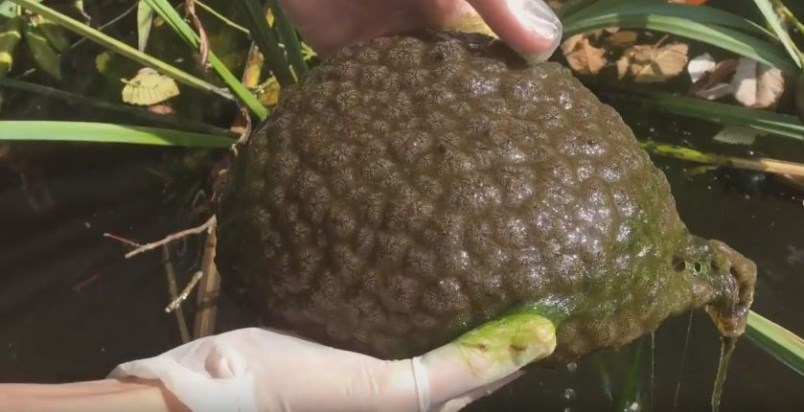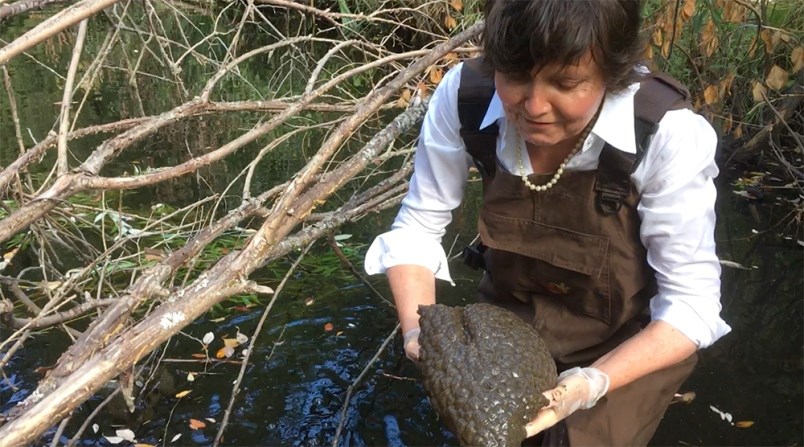The blob of Lost Lagoon is dead.
But, if all goes well, its DNA will survive the winter so that new blobs will create themselves next spring.
The “blob” is more formally called a fresh-water bryozoan. Several were found this past spring in the biofiltration pond that feeds into Stanley Park’s Lost Lagoon. Just like the organism that divides itself endlessly to create the blob, the Courier’s video about its discovery went viral this summer. “The Blob of Lost Lagoon” video, which features Celina Starnes of the Stanley Park Ecology Society, has been viewed more than 940,000 times on YouTube, thanks to National Geographic picking up the story and British tabloid headlines that harkened back to 1950s horror movies.
Bryozoans start life as zooids — animals with organs that don’t exist independently. Instead, as conservationist Maria Egerton pointed out during Monday night’s SPES annual general meeting at the West End Community Centre, zooids start dividing in half and form a gelatinous colony. Different parts of the colony will do different jobs as it filters nutrients from the water.
The blob forms around something in the water, such as a stick. It can range in size from an orange to a basketball. Its mysteries have long fascinated the science world, which gave bryozoans the Latin name of Pectinatella magnifica, “the magnificent bryozoan.” It also goes by the less dignified sobriquet “dragon booger.”
Right now, however, there’s not a blob to be found in Lost Lagoon.
“The cold is a stressor,” Egerton said. The blobs “have gone into a dormant state. They just gave up.”
As the zooids start “sluffing off” the colony, they send out spores, or statoblasts. It’s those spores that, after overwintering in the water, may start the colonization process all over again next spring.
It’s believed that fresh-water bryozoans, which likely originated in Mississippi, have been moving north and west due to warmer temperatures. Statoblasts have tiny little hooks that can, for example, latch onto a duck’s leg. When the duck flies to a different pond, the statoblast goes with it.

First formally identified in Stanley Park during the society’s bio-blitz this past spring, it turns out that a photographer documented one in the park in 2005.
The 2017 discoveries, however, are now part of the park’s inventory. The bio-blitz also revealed other species making their home in the park:
- 67 more invertebrates
- eight more birds
- one more fish
- 21 more natural species
- and one more invasive species.
Studies by SPES staff and volunteers over the year also documented:
- 341 bats leaving the pavilion (“an all-time high”)
- 83 to 94 active heron pairs
- 54 active barn swallow nests with 77 observed hatchlings
- four or five nesting eagle pairs
- eight Pacific chorus frogs.
The sightings were quite exciting for everyone, Egerton says, since some of the species, such as barn swallows, have been identified as species at risk in British Columbia.
“That’s a really happy thing,” she said of the successful barn swallow nests found in the mounted police barn.
The Stanley Park Ecology Society welcomes new volunteers. To get involved or find out more, go to stanleyparkecology.ca.



